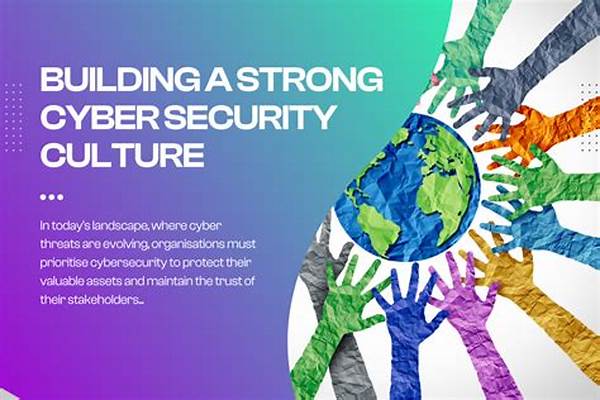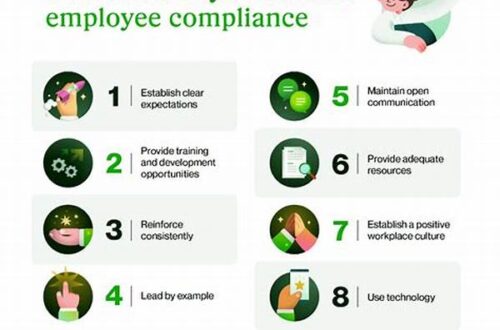In the digital age, where technological advancements have revolutionized the way businesses operate, the significance of cybersecurity cannot be overstated. As cyber threats continue to evolve in complexity and frequency, organizations must prioritize building a strong cybersecurity culture. This involves not only implementing robust security measures but also fostering an environment where every member of the organization understands and values the importance of cybersecurity. In this article, we will explore the key components and strategies essential for cultivating a cybersecurity culture that is resilient and proactive.
Understanding the Importance of a Cybersecurity Culture
Building a strong cybersecurity culture is pivotal for organizations aiming to safeguard their digital assets. A successful cybersecurity culture integrates security practices into the daily routine of employees, ensuring that they are not just aware of potential threats but also actively participating in mitigating them. The process begins with clear communication from leadership, emphasizing the critical role that cybersecurity plays in the overall success of the organization. Organizations should provide regular training and resources, enabling employees to stay informed about the latest threats and defense mechanisms. Ultimately, a robust cybersecurity culture empowers employees to act as the first line of defense, recognizing and responding to threats swiftly and effectively.
Moreover, an effective cybersecurity culture transcends technological measures by embedding security-conscious behavior into the organizational ethos. This involves creating policies that reflect best practices and encouraging employees to adhere to them consistently. Regular drills and simulations can help reinforce these practices, testing the readiness and response capabilities of the workforce. By doing so, organizations not only protect their sensitive information but also build trust with their clients and stakeholders, demonstrating a commitment to security and data protection.
Key Elements of Building a Strong Cybersecurity Culture
1. Leadership Commitment: Building a strong cybersecurity culture begins with leadership commitment. Leaders must prioritize cybersecurity and allocate resources to support robust security measures.
2. Employee Training: Continuous education is essential for building a strong cybersecurity culture. Organizations should provide regular training sessions to keep employees informed about current cyber threats.
3. Clear Communication: Open communication channels help in building a strong cybersecurity culture. Employees need to be aware of security protocols and know whom to contact when issues arise.
4. Policy Enforcement: Establishing and enforcing cybersecurity policies is crucial in building a strong cybersecurity culture, ensuring that all employees adhere to security guidelines.
5. Incident Response Planning: Preparedness is key in building a strong cybersecurity culture. Organizations should have a clear incident response plan to manage and mitigate potential cybersecurity incidents effectively.
Challenges and Solutions in Building a Cybersecurity Culture
Building a strong cybersecurity culture presents several challenges, including resistance to change, varying levels of employee understanding, and resource constraints. Overcoming these obstacles requires a strategic approach. Firstly, organizations should assess their current cybersecurity posture and identify gaps in understanding or compliance among employees. This assessment provides a foundation for targeted interventions and training programs. Additionally, leadership must be actively involved in promoting and modeling cybersecurity best practices, setting a precedent that underscores the importance of security measures.
To address the issue of resource constraints, organizations can explore cost-effective solutions such as leveraging cloud-based security tools and partnering with cybersecurity experts. These partnerships can provide access to specialized knowledge and skills, enabling organizations to build a strong cybersecurity culture without overextending their resources. Furthermore, fostering a culture of open discussion around cybersecurity can encourage employees to share insights and concerns, contributing to a collaborative approach in enhancing security measures across the organization.
Strategies for Implementing a Cybersecurity Culture
1. Conduct Risk Assessments: Regular risk assessments are essential in building a strong cybersecurity culture, as they identify vulnerabilities and help prioritize security measures.
2. Develop a Cybersecurity Framework: Establishing a comprehensive cybersecurity framework provides a structured approach to building a strong cybersecurity culture, guiding organizations in aligning security practices with business goals.
3. Promote Accountability and Responsibility: Encouraging accountability is critical in building a strong cybersecurity culture. Employees should understand their roles and responsibilities in safeguarding organizational assets.
4. Use Real-World Examples: Incorporating real-world cyber incident examples during training sessions can enhance understanding and engagement, further building a strong cybersecurity culture.
5. Create a Feedback Loop: Establishing a system for continuous feedback allows employees to report on cybersecurity measures’ effectiveness, aiding in refining strategies and building a strong cybersecurity culture.
6. Engage with External Experts: Engaging with external cybersecurity experts can provide valuable insights and recommendations for building a strong cybersecurity culture.
7. Leverage Technology: Utilizing the latest security technology is integral to building a strong cybersecurity culture, ensuring robust protection against evolving threats.
8. Build Awareness Campaigns: Awareness campaigns can play a significant role in building a strong cybersecurity culture, keeping security at the forefront of employees’ minds.
9. Incorporate Cybersecurity in Onboarding: Introducing cybersecurity principles during the onboarding process is crucial for building a strong cybersecurity culture from the start.
10. Celebrate Successes: Recognizing and celebrating successes in preventing cyber threats can boost morale and motivate employees, reinforcing efforts in building a strong cybersecurity culture.
Measuring Success in a Cybersecurity Culture
Success in building a strong cybersecurity culture is measured through various metrics, including reduced incidents, improved incident response times, and increased employee engagement in security practices. Organizations should regularly evaluate these metrics to gauge the effectiveness of their cybersecurity initiatives. Surveys and feedback mechanisms can provide insights into employee perceptions of cybersecurity, highlighting areas for improvement or further investment. Additionally, regular audits and compliance checks can ensure alignment with industry standards and regulatory requirements, indicating the maturity of the cybersecurity culture within the organization.
Continuous improvement is at the heart of building a strong cybersecurity culture. As technology and cyber threats evolve, so too must the strategies and practices employed by organizations to mitigate risks. By fostering a culture of vigilance and adaptability, organizations can remain resilient in the face of emerging cybersecurity challenges, ensuring long-term protection of their digital assets and business operations.
The Role of Technology in Cybersecurity Culture
The integration of advanced technologies plays a pivotal role in building a strong cybersecurity culture. Solutions such as artificial intelligence, machine learning, and automation offer powerful tools to detect and respond to threats swiftly. By leveraging these technologies, organizations can enhance their cybersecurity posture, reducing the reliance on human intervention for routine security tasks. This allows cybersecurity personnel to focus on strategic initiatives and complex threat analysis.
Furthermore, technology facilitates information sharing and collaboration, both internally and with external partners, thereby enriching the cybersecurity culture. Platforms that provide real-time data analysis and threat intelligence can equip organizations with the insights needed to make informed decisions quickly. By staying abreast of technological advancements and incorporating them into their cybersecurity strategies, organizations can not only strengthen their defenses but also create a scalable and sustainable cybersecurity culture.
Summary
In conclusion, building a strong cybersecurity culture is an ongoing endeavor that requires commitment, education, and strategic implementation across all levels of an organization. The involvement of leadership, coupled with sustained employee engagement, forms the cornerstone of an effective cybersecurity culture. Clear policies, continuous training, and the integration of advanced technologies are critical components that facilitate a proactive approach to cybersecurity.
Organizations must recognize the dynamic nature of cybersecurity threats and remain vigilant in updating their strategies accordingly. By fostering a culture that prioritizes security, organizations can mitigate risks and protect both their digital and physical assets. The collective effort of leadership and employees in building a strong cybersecurity culture not only fortifies the organization’s defenses but also builds trust and confidence among clients and stakeholders, ultimately contributing to the organization’s overall success and reputation.





